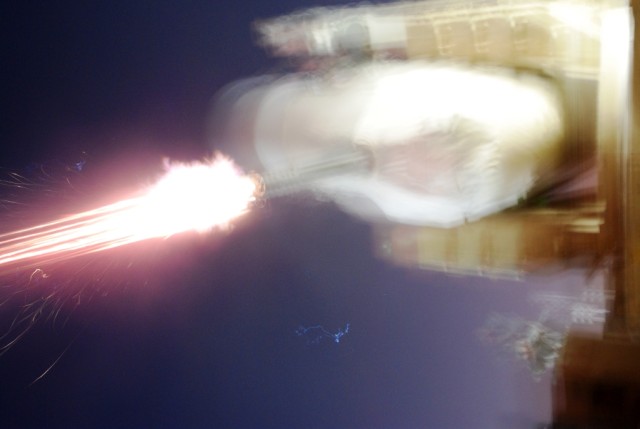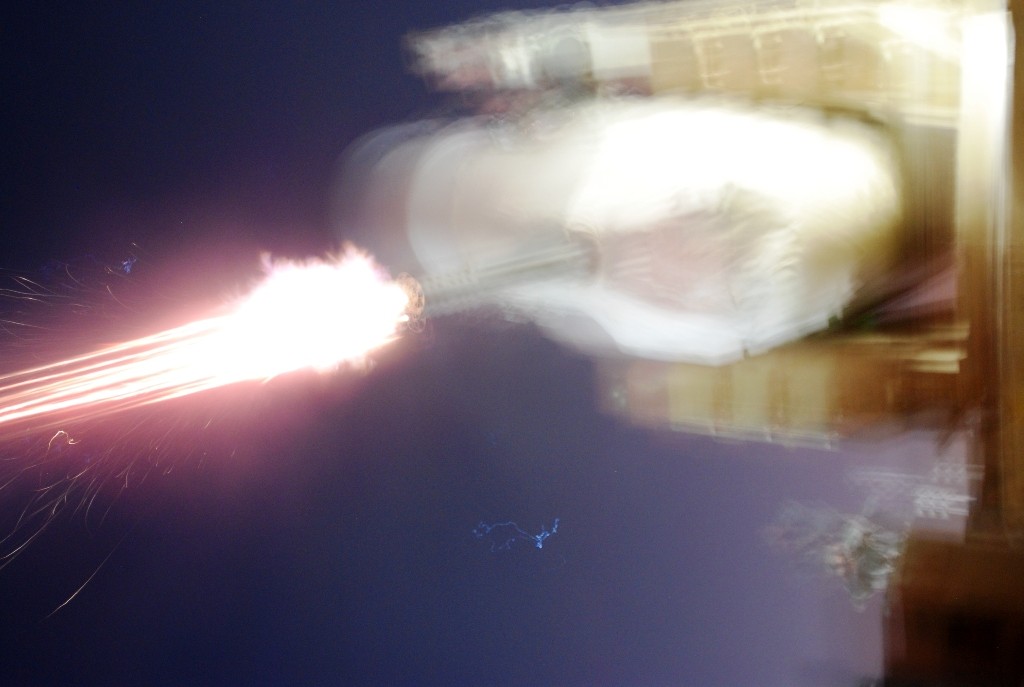BASRA, Iraq - At the beginning of the conflict in Iraq, indirect fire was an effective tool for the enemy. Simple to prepare and able to strike targets inside bases with little warning, troops were sent scrambling for cover with mere seconds to find it.
That was then. This is now.
To ensure the readiness of the Counter Rocket Artillery and Mortar system, or C-RAM, radar technicians and U.S. Navy weapon system maintainers with Battery A, 5th Battalion, 5th Air Defense Artillery Regiment conducted a test of the complex system's firing capabilities in Basra in the early morning of Oct. 22.
The C-RAM represents the efforts of two separate teams from different services working together to bolster defenses on bases in Iraq and Afghanistan.
Soldiers in air defense, accustomed to tracking aircraft with sophisticated radar, redesigned their equipment. Now the radars track incoming fire, warning Soldiers of the danger before it draws close enough to do harm.
Spc. Michael Miller, a Soldier with Battery A, is on his second deployment with the C-RAM System.
"It's pretty cool to be doing the same mission again," said Miller, a Sarasota, Fla., native.
Sgt. 1st Class Christopher Hall, a platoon sergeant with Battery A, 5th Bn, 5th ADA Regt., said the shift from tracking aircraft to defending against IDF has its own challenges.
"Given our typical air defense mission, it's a lot harder to shoot a bullet down instead of an airplane," said Hall, a native of Summersville, W.V.
The U.S. Navy weapon system maintainers brought their anti-missile guns from the ships to the shore, providing an active defense against incoming attacks. The Land-Based Phalanx Weapon System is integrated with radar, allowing them to track and engage targets before they can pose a threat to the base.
Petty Officer 1st Class Christopher Johnson has worked with the weapon on the ships it originated from and its land-based counterpart for more than three years.
"It's one of the most extensive systems, even in the Navy as far as weapon systems go," said Johnson, a Clarksville, Tenn., native.
The C-RAM system's capabilities help safeguard the U.S. forces against attack as they draw down across the Iraq, said Capt. Lloyd Sporluck, commander of Battery A, 5th Bn., 5th ADA Regt. commander.
"So C-RAM becomes absolutely crucial to force protection measures here in theater," said Sporluck, a Jasper, Texas, native.
Working with the equipment is a rewarding privilege, being that the U.S. Army is the only force fielding the equipment in the theater, Sporluck added.
"Although not 100 percent accurate, it definitely saves lives," Sporluck said. "Giving personnel three-to-five seconds of warning on incoming fire is three-to-five seconds nobody else has the capability of doing."


Social Sharing